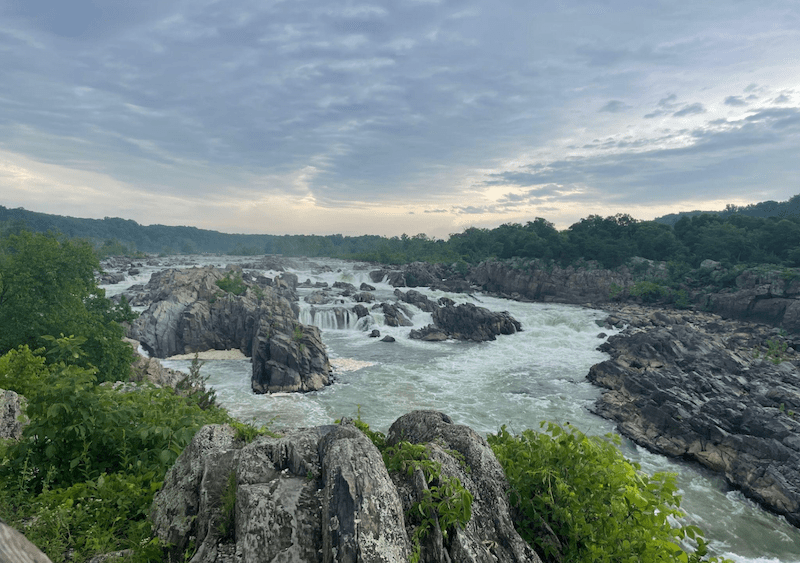Life at the George Washington Memorial Parkway
Written by: Alexa Olivares
The George Washington Memorial Parkway (GWMP), a 20th century roadway built as a memorial to our first president as well as a National Park. The GWMP connects the nation’s capital to George Washington’s home at Mount Vernon and extends west to Great Falls. The parkway is an integrated system of parks and roads designed to preserve the natural and cultural landscape. An assortment of native trees/vegetation, hills, and curves, serve to screen commercial areas providing gorgeous scenic views along the Potomac River.
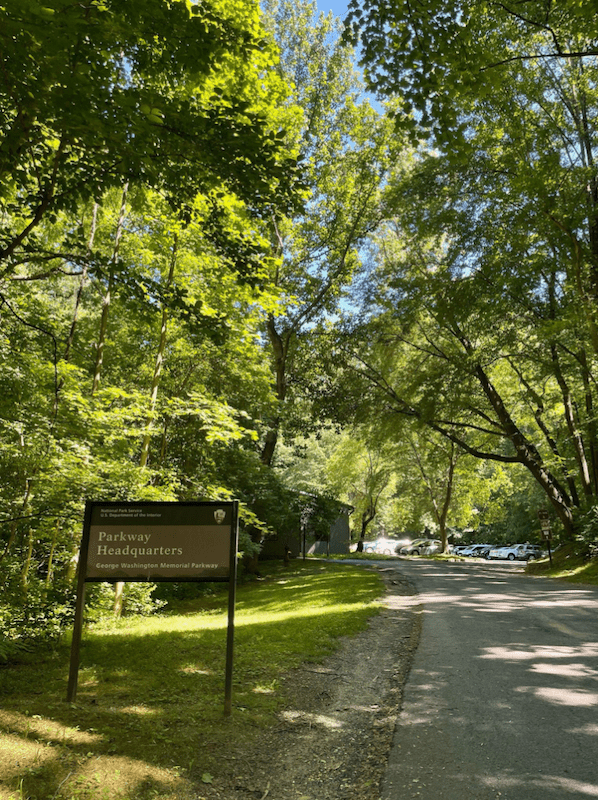
On my first day as the Cultural Resources Diversity Internship Program (CRDIP) member at the George Washington Memorial Parkway (GWMP) I was greeted by the friendly Resources Management staff including Cultural and Natural resources. Being that my position is partially remote, our schedule is often up in the air and decided on a case by case basis. The first days were spent familiarizing myself with the Turkey Run headquarters, settling into the new office, getting set up with my government PIV card to access my laptop and NPS email. These steps granted me access to NPS share folders, ArcGIS, Department of the Interior software/programs, and more. All necessary to get me ready for fieldwork and collections management.
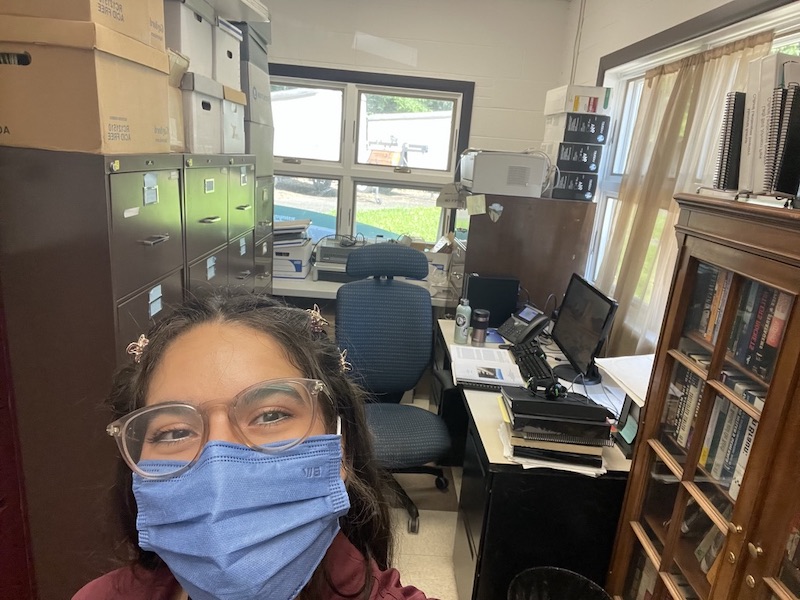
On the 9th of June, I had my first field day. On this day I accompanied the NPS cultural and natural resource specialists, as well as a landscape architect, for the Cultural Landscape Inventory (CLI) of Theodore Roosevelt Island. There, each party examined and recorded notes regarding any disturbances to archaeological sites or the natural landscape. This includes documenting invasive vegetation for future removal projects, vegetative disturbances, signs of erosion, public digging/social trails, signs of animal activity, etc. Here we also had several discussions surrounding the historical interpretation at Theodore Roosevelt Island (TRI) including future projects to include other histories related to TRI. Some of these include the US Colored Troops camp and thousands of years of Indigenous land use/habitation of the island. During this field day we also made stops at Fort Marcy, a civil war defense site, Pimmit Run, and the Potomac Heritage Trail. Overall, a really great day of fieldwork and my first explorations of a few of the many historic/prehistoric sites on the GWMP.
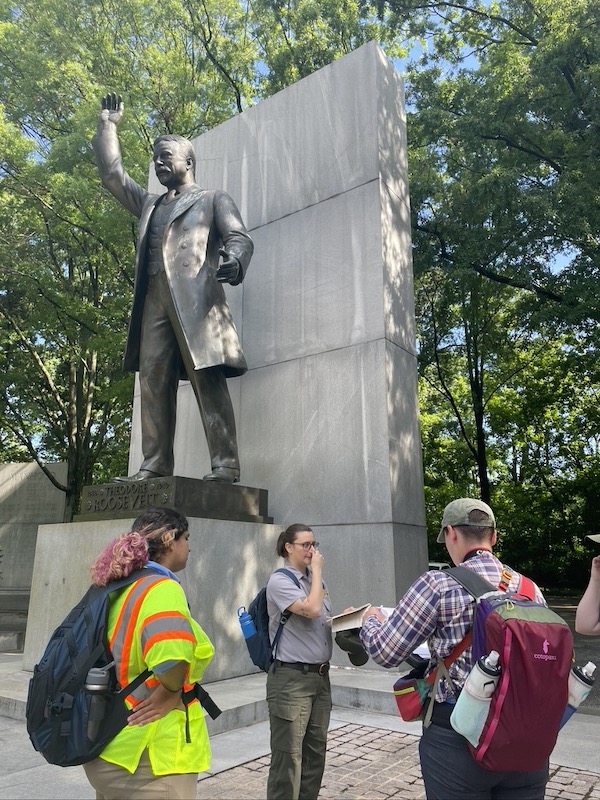
Following these excursions were a few more days of administrative tasks. On June 14th, I headed over for a GWMP team wide meeting at Great Falls Park, VA. There, the superintendent ran through many tasks primarily pertaining to the accessibility concerns at Park facilities. Particular interest was the debate between a lift vs elevator and the benefits/disadvantages of both, as well as the redesign of the main exterior ramp. All part of making NPS a welcoming and easily navigable place for all regardless of physical needs. I learned a lot about legal and social implications of accessibility at National Parks and the importance of finding balance between preserving cultural/natural landscape and creating a fully wheelchair/mobility aid accessible space. I took a chance to explore Great Falls park, exploring the 2 wheelchair accessible overlooks of the Potomac River, and visiting the remains of the Patowmack Canal. Beautiful cascades on rock cliffs are accessible by ramp. Even on cloudy days like this one, Great Falls park sees some of the most visitation on the GWMP bringing even more urgency to the accessibility standards and better drainage for stormwater in the main visitor area.
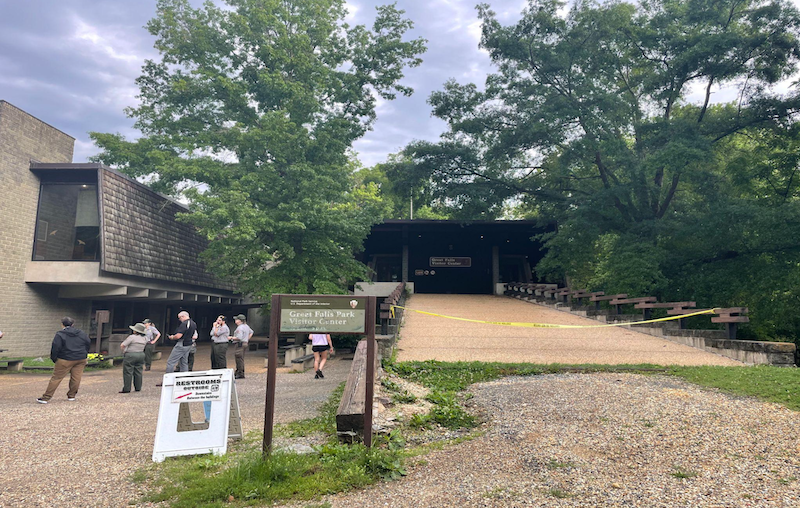
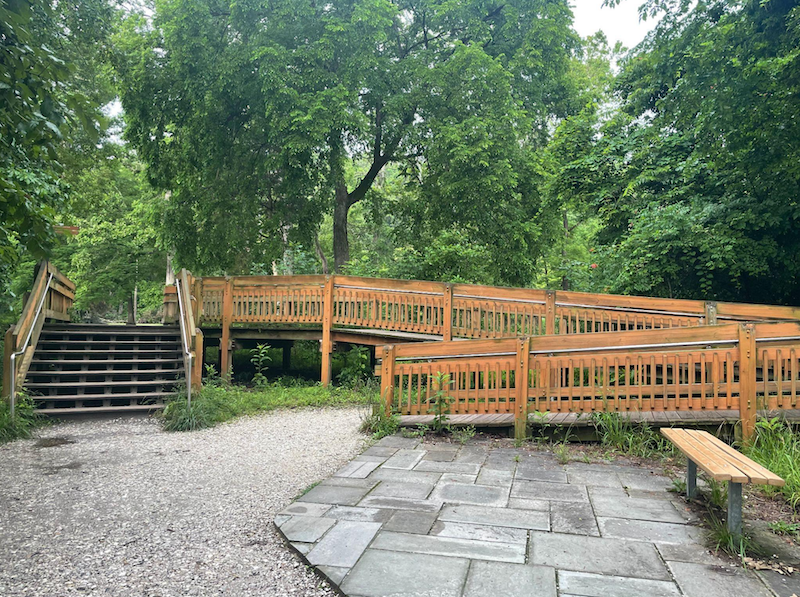
The days that followed were research and preparation focused for upcoming NPS-NCA cultural resource inventory archaeological site condition assessments. Working closely with NPS archaeologist Megan Bailey, we plan to get through assessing as many sites as possible throughout the duration of my program, starting at Great Falls park. Serving with NPS, I observed the federal holiday of Juneteenth and did not serve.
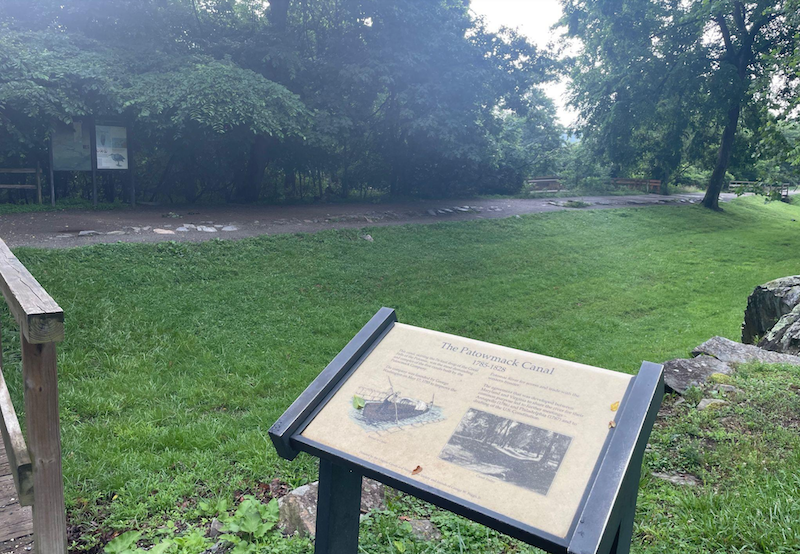
On June 22, we head out for a long day of intense hiking in the brutal heat and humidity of DMV summers. In all we hiked approximately 12k, finding archaeological sites at Great Falls park using GPS and Latitude/Longitude coordinates. We also employed descriptive data found in archaeological reports during telework days. While at Great Falls park we embarked on several tasks mainly pertaining to examining several historic plaques in need of potential conservation work, and finding the historic Matildaville archaeological sites. Matildaville served as the village site of construction personnel and headquarters for the Patowmack company. It was the home of workers and guests, boasting the company superintendent’s house, a market, grist mill, sawmill, foundry, Inn, ice house, worker’s barracks, boarding homes, and several small homes. Several of these structures were visible above ground and labeled, however many others were much more challenging to identify. Shown in some of the pictures here, NPS Archaeologist Megan Bailey and I determine the structural integrity of the foundations of Matildaville ruins. This historic town on the Potomac River has a rich history and lots of visitation. Throughout our day many visitors stopped us to inquire about our activities and the history of the site, asking about visitor services, or general requests for park maintenance. Though not all visitor’s questions were within the scope of our expertise, it was very nice to see so many people deeply involved and invested in their local parks.
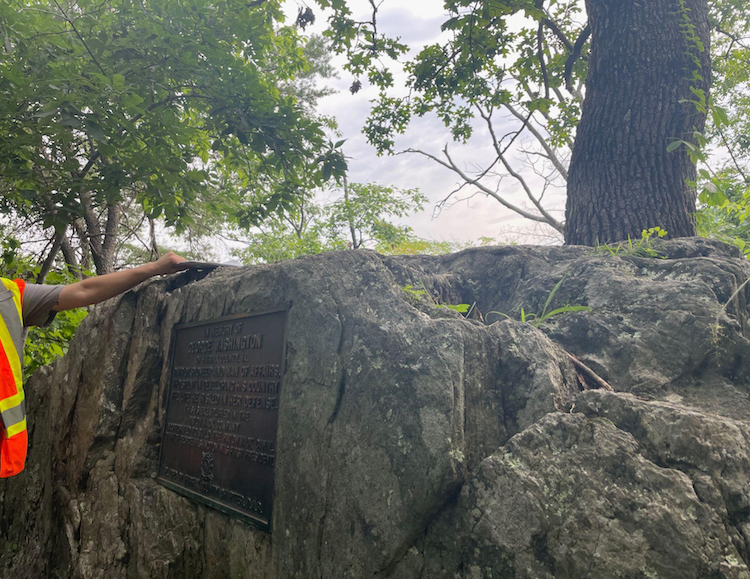
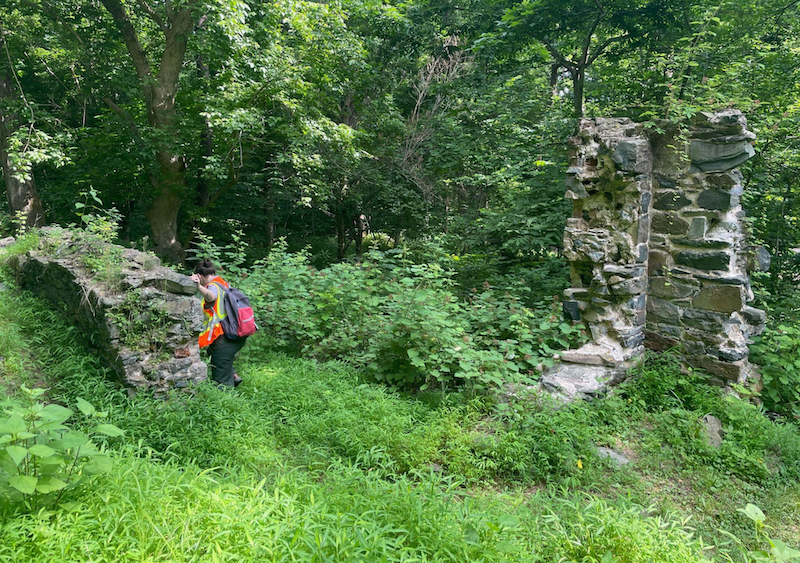
We made two visits to Great Falls, the next on June 24. This day we were primarily following up on speculations that had arose while in the field the previous work day. We had some concerns about precise locations of some of the Matildaville structures and worried we may have confused one of the structures for another. As not all foundations are visible, going off of soil and vegetation is challenging given the summer overgrowth which has formed a dense forest around the sites. Here we came across a delightful artifact scatter of historic objects, mainly glassware and tableware of unidentified time period. These are all just some of the many important tasks that make up Cultural Resources management at the GWMP. I am very fortunate to have been able to accompany staff and learn so much in such a short time!
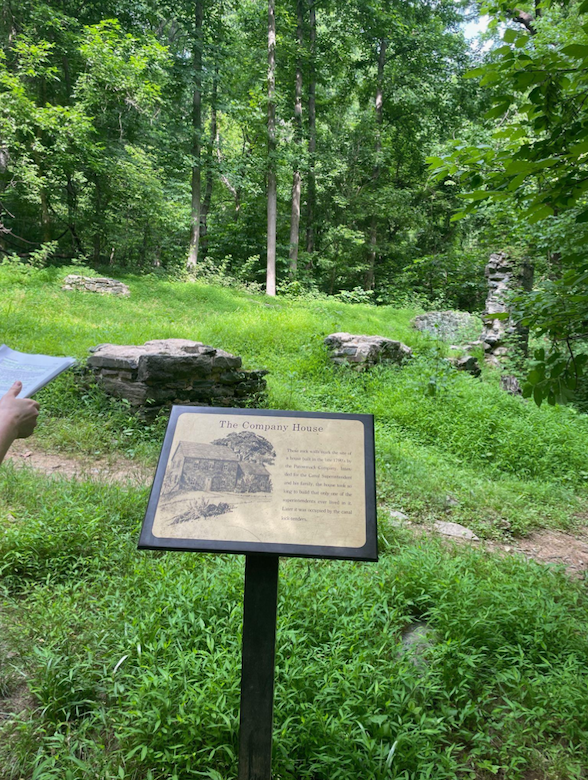
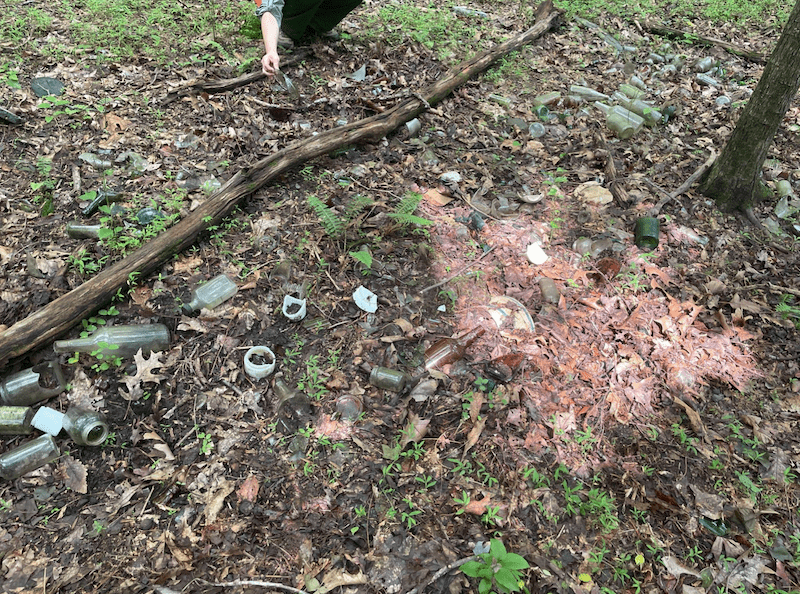
My first months as CRDIP at the GWMP has taught me so much more than I could’ve hoped for. Every day is exciting and contextualizing federal archaeological work and the natural/cultural landscape of the area I grew up in. NPS caters to the public in a very direct way that is unique compared to private sectors of archaeology for example. All decisions at the federal level must be carefully and meticulously thought through, accounting for all perspectives from the public and professionals. The ultimate goal being to preserve in perpetuity the natural/cultural landscape, wildlife, and recreational leisure of the parks for visitors and staff. Sometimes the tedious work must be done, all crucial in ensuring the ethical responsibility staff have to uphold the parks to the highest standard possible.
All the knowledge I am gaining is an invaluable way for me to connect with the cultural landscape and architecture of the area I was raised in a much more impactful way. Driving the GWMP as a commuter, a student on field trips to Mount Vernon, and growing up in Maryland have been incredibly helpful in preparing me for this experience. The GWMP is unique, not only for its rich cultural history, but also for its design meant to directly inspire visitors and commuters to connect with their history and environment. The Historic and natural landmarks adorning the parkway provide life and meaning to the gorgeous views right in the middle of the nation’s capital area. I look forward to the rest of my time as a member at the GWMP!
